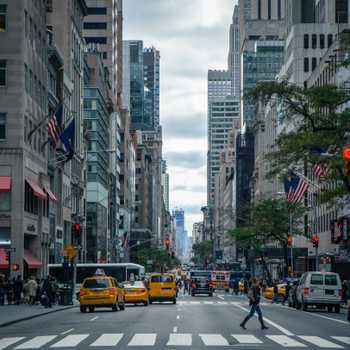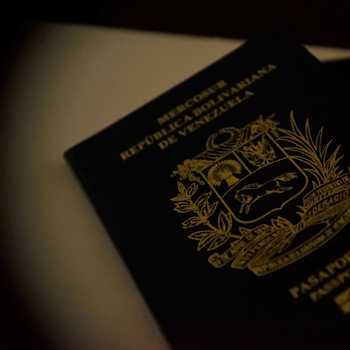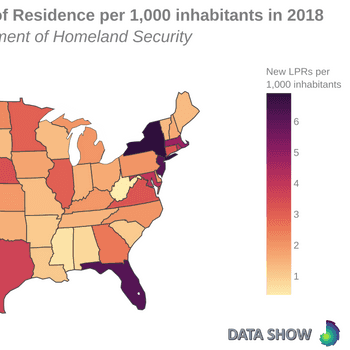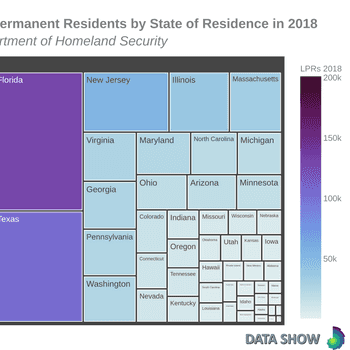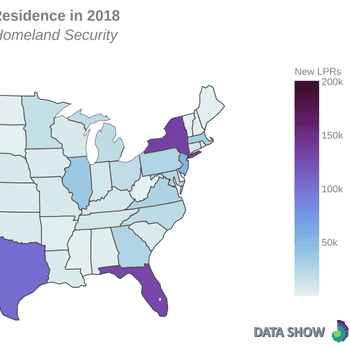
2020 World Press Freedom Index : A decisive decade for the future of journalism
According to RSF’s measures, world press freedom improved very slightly in 2019. However, the Covid-19 pandemic highlights and amplifies the multiple crises that threaten the right to free, independent, pluralistic and reliable information.

Aug 11, 2020 - 6 minutes read
About the index score
The Press Freedom Index is a ranking of 180 countries published yearly by Reporters Without Borders on the basis of countries’ press freedom results according to the organization’s own assessment. This ranking attempts to reflect the degree of freedom that journalists, media, and netizens have in each country, and the efforts made by the authorities to respect this freedom.
The World Press Freedom Index is composed of a number of indicators, which are :
- Pluralism : Measures the degree to which opinions are represented in the media.
- Media independence : Measures the degree to which the media are able to function independently of sources of political, governmental, business and religious power and influence.
- Environment and self-censorship : Analyses the environment in which news and information providers operate.
- Legislative framework : Measures the impact of the legislative framework governing news and information activities.
- Transparency : Measures the transparency of the institutions and procedures that affect the production of news and information.
- Infrastructure : Measures the quality of the infrastructure that supports the production of news and information.
- Abuses : A seventh indicator based on data gathered about abuses and acts of violence against journalists and media during the period evaluated is also factored into the calculation.
The final score is defined on a scale from 0 to 100. The higher the score of a country, the more worrying the situation for that country. The press freedom map presents a visual summary of the performance of 180 countries in the World Ranking.
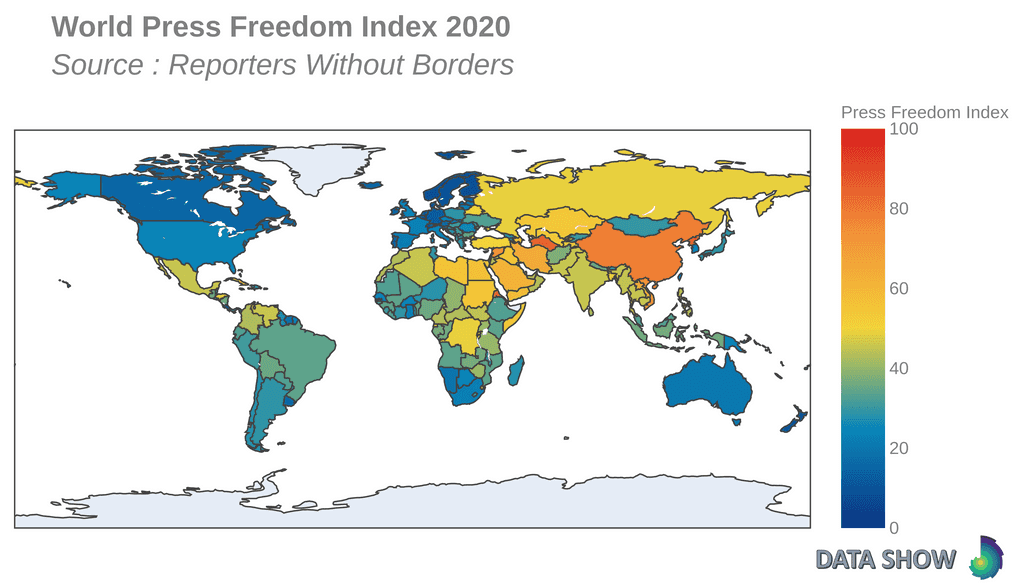
The Index region by region
Europe
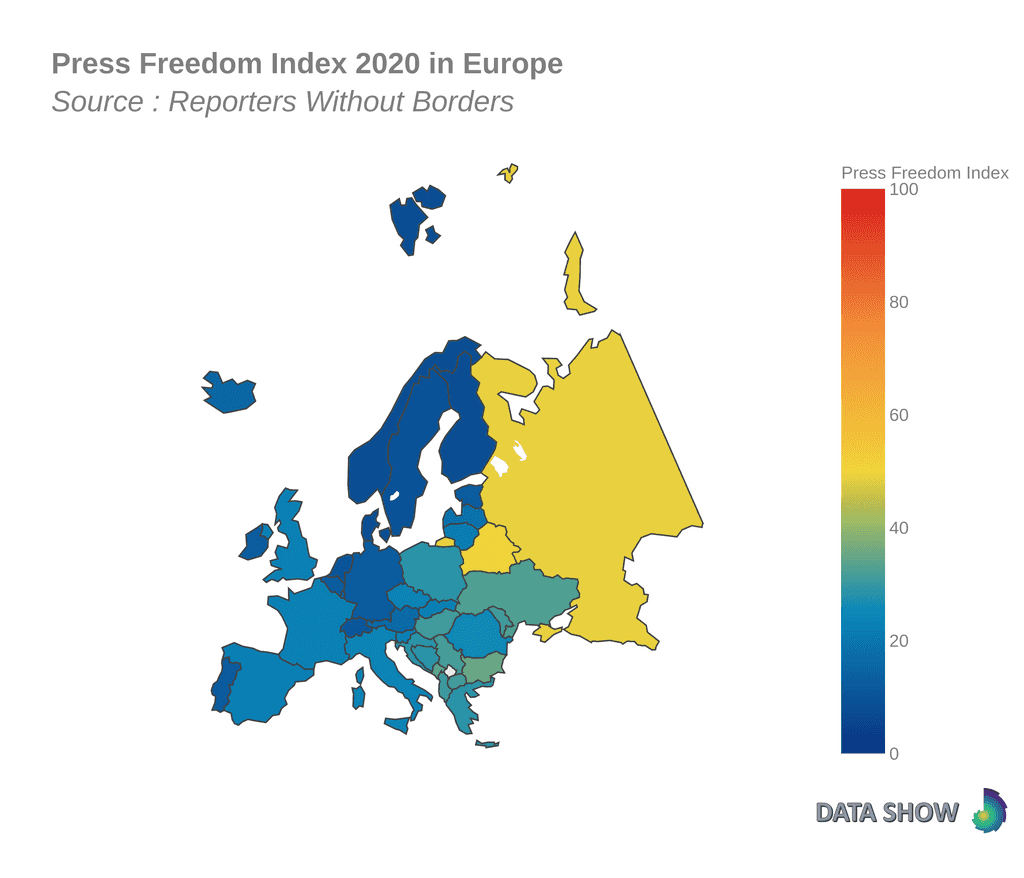
Top and bottom of the Press Freedom Index ranking in Europe :
| Ranking | Country | RSF Score 2020 |
|---|---|---|
| 1 | Norway | 7.84 |
| 2 | Finland | 7.93 |
| 3 | Denmark | 8.13 |
| … | … | … |
| 111 | Bulgaria | 35.06 |
| 149 | Russia | 48.92 |
| 153 | Belarus | 49.75 |
Europe remains the continent the most in favor of press freedom, despite the repressive policies of certain countries. Although several states are among those which respect press freedom the best, the EU is increasingly heterogeneous, undermined by the successive economic crises, the fight against terrorism, but also by states sliding more and more towards a more authoritarian regime.
North America
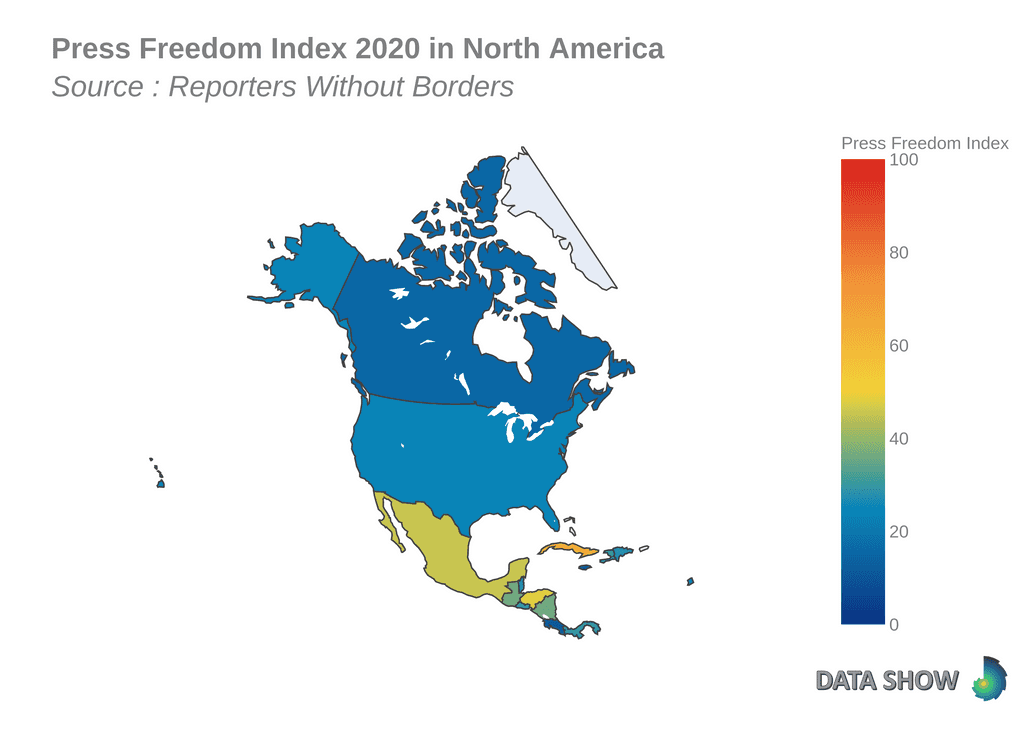
Top and bottom of the Press Freedom Index ranking in North and Central America :
| Ranking | Country | RSF Score 2020 |
|---|---|---|
| 6 | Jamaica | 10.51 |
| 7 | Costa Rica | 10.53 |
| 16 | Canada | 15.29 |
| … | … | … |
| 143 | Mexico | 45.45 |
| 148 | Honduras | 48.20 |
| 171 | Cuba | 63.81 |
In North America, though nations have historically respected the press, journalists in these countries are being challenged by the very institutions on which they report. Journalists and the media regularly face verbal and physical threats, denied access to information, as laws and lawsuits restricting their rights multiply.
South America
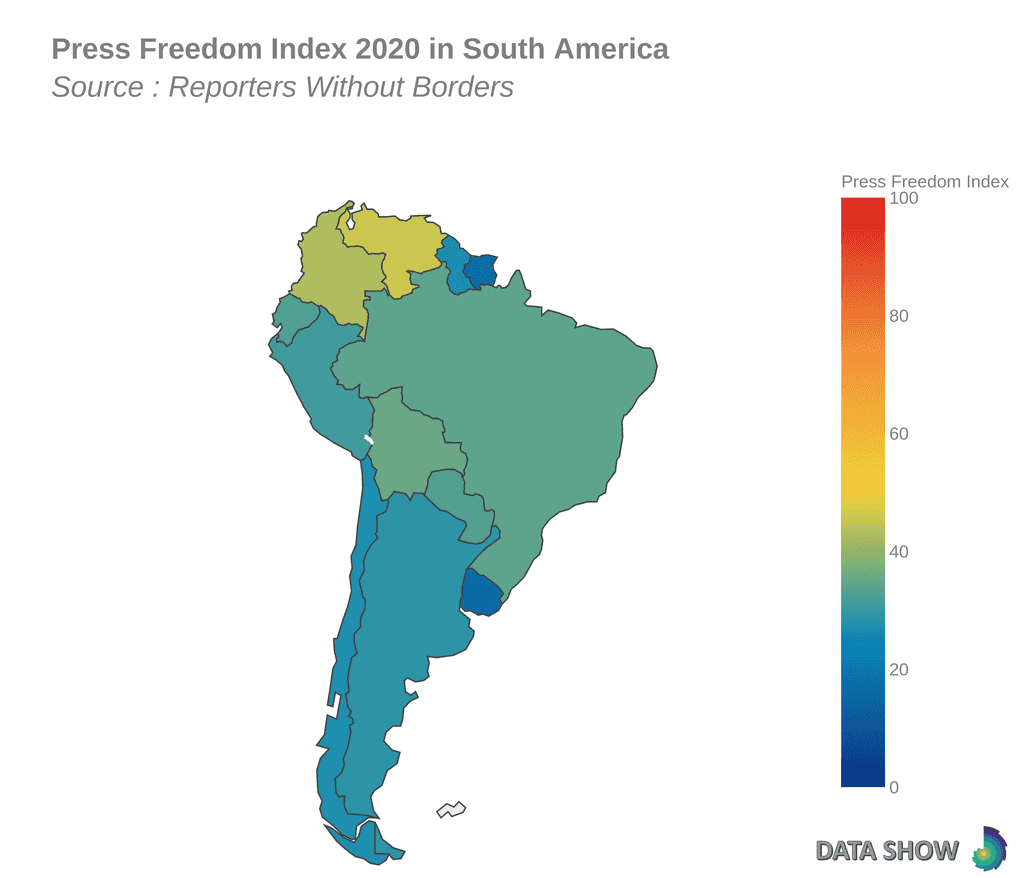
Top and bottom of the Press Freedom Index ranking in South America :
| Ranking | Country | RSF Score 2020 |
|---|---|---|
| 19 | Uruguay | 15.79 |
| 20 | Surinam | 17.50 |
| 49 | Guyana | 26.63 |
| … | … | … |
| 114 | Bolivia | 35.37 |
| 130 | Colombia | 42.66 |
| 147 | Venezuela | 45.66 |
In South America, the decade begins with a general deterioration in the situation of press freedom. The context in which journalists in Latin America operate is increasingly complex and hostile, and several countries are among the world’s most dangerous places for journalists.
Africa
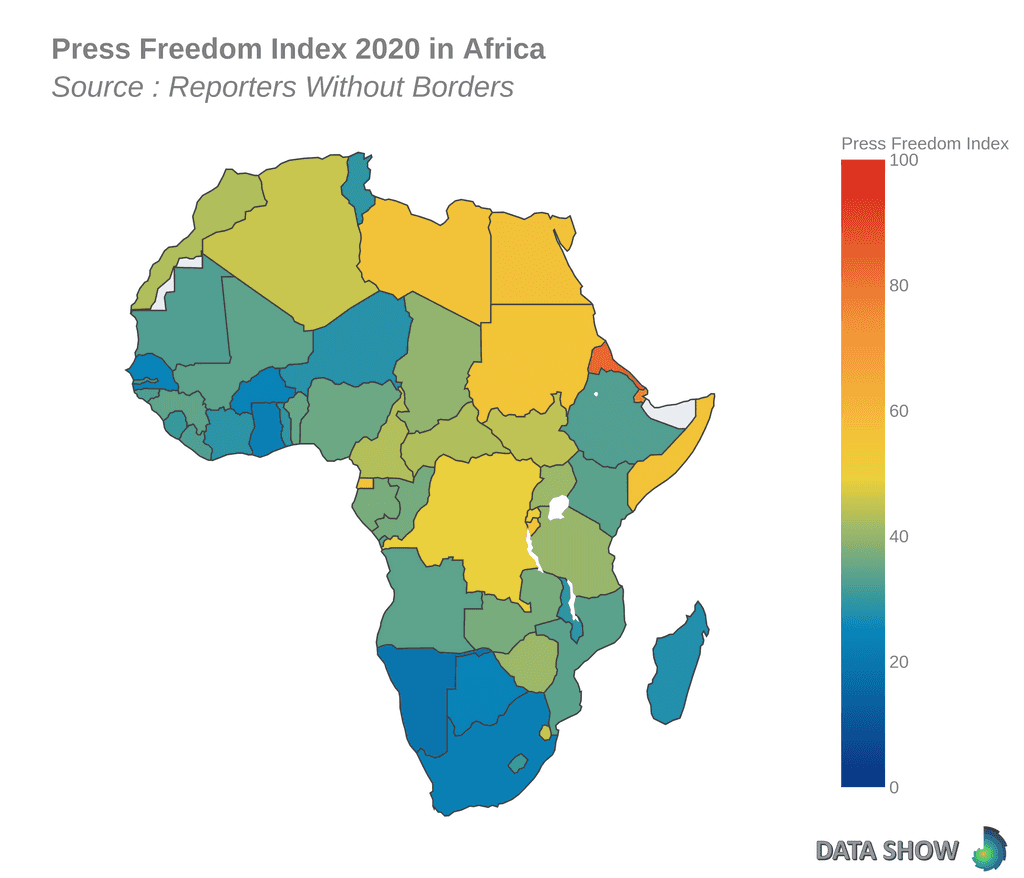
Top and bottom of the Press Freedom Index ranking in Africa :
| Ranking | Country | RSF Score 2020 |
|---|---|---|
| 23 | Namibia | 19.25 |
| 25 | Cabo Verde | 20.15 |
| 30 | Ghana | 22.26 |
| … | … | … |
| 166 | Egypt | 56.82 |
| 176 | Djibouti | 76.73 |
| 178 | Eritrea | 83.50 |
Africa is recording significant setbacks, due in particular to an increase in long-term arbitrary detentions, but also to attacks, particularly online, and new repressive laws which, in the name of the fight against disinformation or cybercrime, can be used to unreasonably restrict freedom of information. The economic weakness of the media also exposes them to political or economic influences detrimental to their independence.
Asia
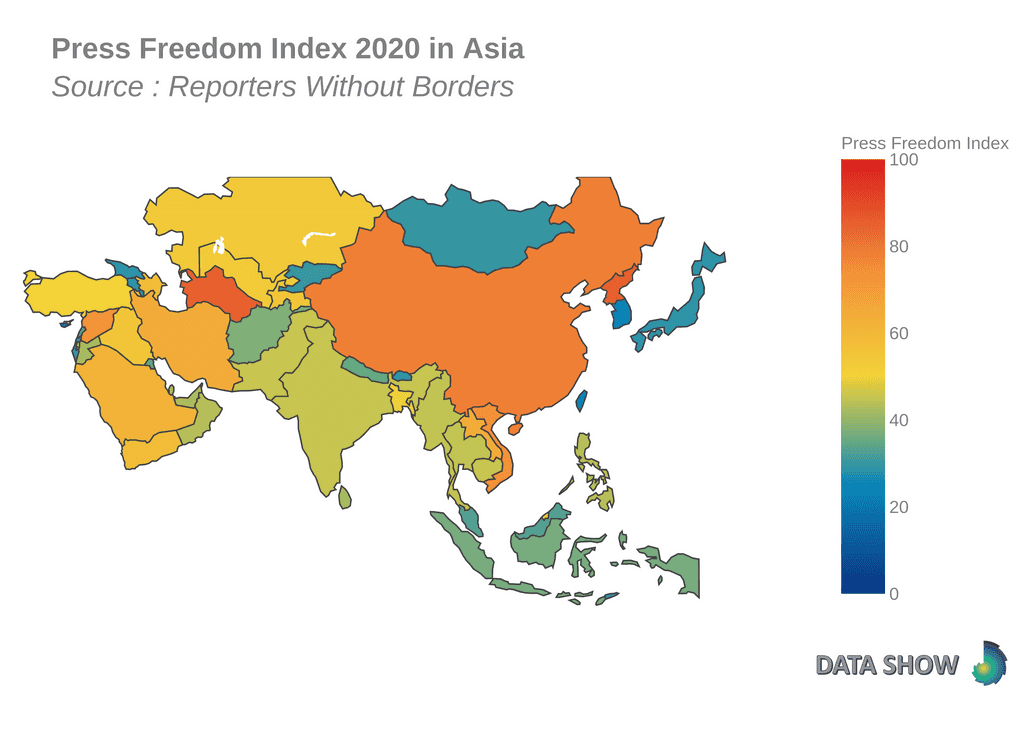
Top and bottom of the Press Freedom Index ranking in Asia-Pacific :
| Ranking | Country | RSF Score 2020 |
|---|---|---|
| 9 | New Zealand | 10.69 |
| 21 | Samoa | 18.25 |
| 26 | Australia | 20.21 |
| … | … | … |
| 177 | China | 78.48 |
| 179 | Turkmenistan | 85.44 |
| 180 | North Korea | 85.82 |
The Asia zone, counts manifold countries among the most dangerous for the profession and brings together the largest prisons in the world for journalists and bloggers. The Asia-Pacific region also holds a great number of “predators of press freedom” states, true black holes of information.
Conclusion
This 2020 World Press Freedom Index states that the coming decade is going to be decisive for press freedom due to five converging factors which can be :
- a democratic crisis due to polarization and repression
- a geopolitical crisis driven by the aggressiveness of authoritarian regimes
- an economic crisis impoverishing quality journalism
- a trust crisis due to suspicion and even hatred of the media
- a technological crisis due to a lack of democratic guarantees
To these five types of crisis is now added a health crisis. Indeed, the coronavirus pandemic highlights and amplifies these multiple crises which today threaten the right to free, independent, pluralistic and reliable information.
Did you find this article interesting ? Subscribe to the newsletter.


